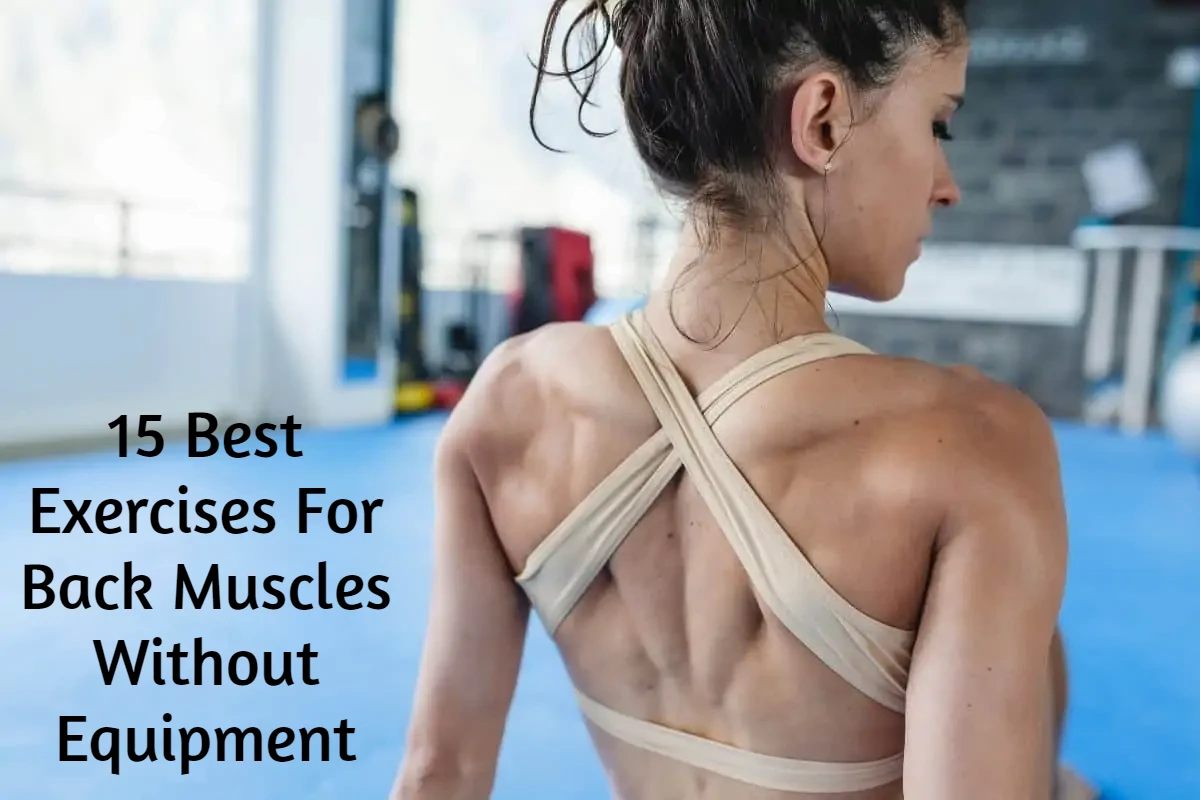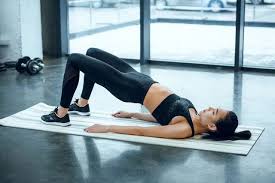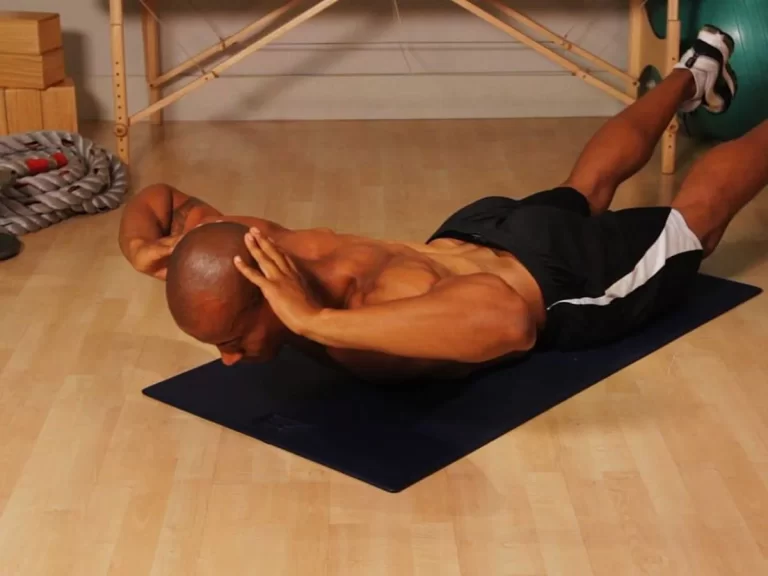15 Best Exercises For Back Muscles Without Equipment
If there’s one thing that workouts have taught us, it’s that working out without equipment is terrible. These inventive exercises target every major muscle group on your flip side using just your body weight and a towel. Even though they appear easy, this back exercise will leave you sore if done correctly.
This back workout relies heavily on the mind-muscle connection. To get the most out of each repetition, really feel your back muscles contracting and squeeze them forcefully (isometrically) at the peak of the contraction.
Table of Contents
Why Are Back Exercises Important?
- When working out, back exercises may go to the bottom of your priority list, particularly if access to equipment and club subscriptions is a problem.
- The fact that you are behind those specific muscles is one of the primary causes.
- It’s human nature to focus on what you see in the mirror or when looking down.
- Sometimes it’s how you feel; if you have a muffin top, you might reach for a manual on back-toning exercises, but most of the time, it’s your tummy or your chest, no matter how large or small, that makes you want to do the bench press.
- Your arms are in the same boat.
- Vanity curls can increase the size of your biceps, but the muscular mass in those tiny areas is only a small portion of the triceps, which are located on the backs of your arms.
- But it’s not just about appearances.
- Exercises for the back strengthen and develop the muscles in the back.
- This can assist in improving your balance and posture.
- Additionally, back exercises can help people who spend a lot of time sitting down by easing discomfort and stiffness in the posterior chain, which can impair anything from standing up to bending over.
15 Best Exercises For Back Muscles Without Equipment
Ironman Extension

- With your knees together and your arms by your sides, palm facing up, assume a facedown position.
- Clench your fists together. Raise your upper body and legs off the ground while maintaining your head neutral and straight with your spine.
- At the same time, rotate your arms in their shoulder sockets so that your palms face the ground.
- Hold for a moment, then repeat these actions to get back to the beginning.
Training Tip: As you rise, actively stretch your arms away from your head in the shape of a punch at the wall behind you. Your shoulders and upper back get tight as a result, making each rep harder.
Floor Pull-Up
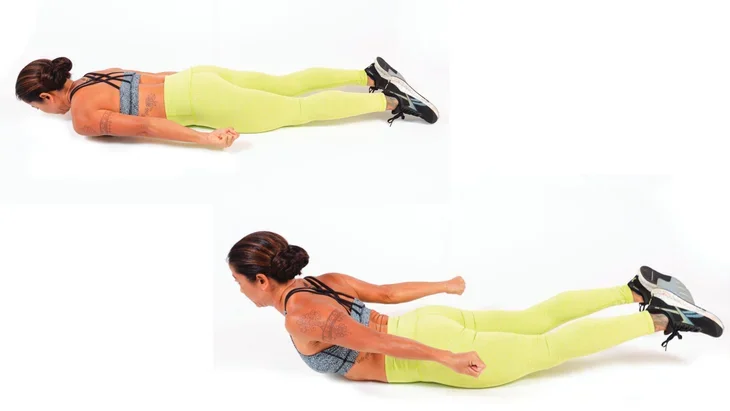
- Place your legs together and lie facedown on a smooth floor, covered with a towel if needed.
- Make fists with your hands and place your forearms below your shoulders with your elbows bent.
- As you push backward and move your torso away from your elbows, maintain a taut body and a neutral head.
- Once you’ve descended as far as you can, use your elbows to drive into the floor and pull yourself back to the start.
Training Tip: Pull yourself back to the starting position by applying pressure to your toes and maintaining a tight body.
Plank Row
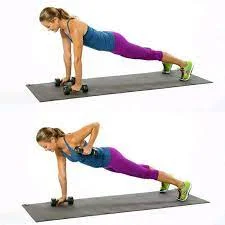
- Put your hands below your shoulders and line your head, hips, and heels to form a plank position.
- As you slowly raise one arm off the ground, keep it close to your side, and raise your elbow towards the ceiling, maintaining a square hip position.
- Put your hand back on and continue by switching sides.
Training Tip: Squeeze your glutes to maintain a firm core and square hips to prevent swaying back and forth. Actively drive back with the ankle opposite the working arm.
Kneeling Towel Row
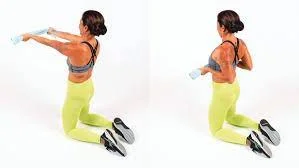
- Struck so that your head is at level with your spine and your knees are directly beneath your hips.
- Stretch your arms straight out in front of you at shoulder height while holding a towel with an underhand grip the width of your shoulder.
- Drive your elbows back and bring the towel into your abdomen while actively pulling outward against the towel’s ends.
- Squeeze your muscles hard for a short while, then start over from where you started.
Training Tip: Severe isometric contraction is essential to this exercise. To engage as many muscle fibers as possible, pull outward against the towel as hard as you can while squeezing your back to its maximum position.
Plank Forward/Backward Reach
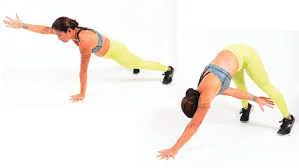
- Put your hands beneath your shoulders and your feet wide apart to form a plank position.
- Reach one arm straight out in front of you while maintaining a plank position.
- Next, raise your hips and keep your legs straight as you reach underneath your body to touch the leg on the other side.
- After finishing every rep on one side, swap.
Training Tip: To challenge your balance, core, and back, make this action fluid by extending forward and backward for reps.
Posterior Plank

- Stretch out in front of you while sitting with your legs together.
- With your fingers pointed outward, place your hands outside of your hips and slightly behind you.
- Elevate your hips and press through your hands and heels in a single fluid motion until your body forms a reverse plank from your head to your toes.
- After a little pause, go back to the start.
Training Tip: Avoid heaving into your shoulders. As you aggressively apply pressure with your hands, maintain an elevated chest.
Cat-Cow
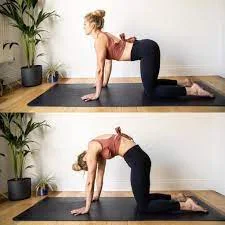
- With your hands beneath your shoulders and your knees beneath your hips, get down on all fours on the floor.
- With your back flat and your abs contracted, your spine should be neutral.
- Draw your belly button in towards your spine and curve your spine upward towards the ceiling to enter the cat pose. Put your chin against your chest.
- After that, lower your tummy and arch your back to enter the Cow stance. Raise your tailbone and head towards the ceiling.
- Cycle through again, making an effort to deliberately consider activating every segment of your spine.
Bird Dog

- Get on all fours with a flat back, wrists stacked beneath shoulders, and knees stacked below hips to assume the tabletop posture.
- Hold your core to stay balanced while you equally lift and extend your opposite arm and leg.
- Raise your leg straight back so that it is parallel to the floor and extend your arm straight ahead so that it is parallel to the ground.
- Bring your elbow and knee together to make contact below your chest before lowering your hand and leg to their initial positions on the ground.
- Go back to where you were before.
- On the other side, repeat.
- Move as slowly and deliberately as you can, continuing to change sides.
Y’s, T’s, W’s, and A’s
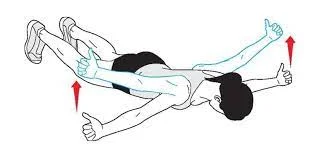
- The “Y” exercise starts with you lying on your stomach, arms raised above in the shape of a large letter Y, your legs straight, and your forehead supported by a rolled hand towel.
- To raise your arms just, while maintaining the rest of your body on the floor, contract your upper back muscles. Lower your arms back down slowly.
- Make at least 20 repetitions.
- Next, extend your arms to the sides in the shape of a huge T. Using your upper back muscles, raise your arms off the floor.
- Lower your arms back down slowly.
- Make at least 25 repetitions.
- Now, make the letter “W” with your arms raised and out to the sides of your ears, bent elbows included.
- Press, raise, and descend a minimum of 20 times.
- Next, make a capital letter A with your arms by straightening them and bringing them down by your hips at a 45-degree angle from your shoulder.
- Repeat at least 25 times: squeeze, lift, and lower.
Inchworm With Push-Ups
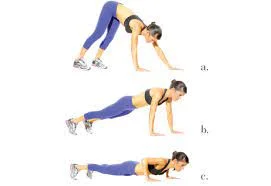
- Maintain proper posture and stand erect.
- To put your fingertips in front of your torso, hinge at the hips. According to how flexible your hamstrings are, you might need to give your knees a slight bend.
- Keeping your toes and balls of your feet grounded behind you, press your palms into the earth.
- Once you are in a push-up posture with your hands stacked above your shoulders, walk your hands out in front of you.
- Lower your chest towards the floor and perform one full push-up, bending your elbows so that your hips line up with the rest of your body from your head to the bottom of your feet.
- To finish the push-up and straighten your arms, press through your hands.
- Like in a down dog yoga pose, raise your butt into the air and begin walking your hands back towards your feet.
- Use the posterior chain of muscles, such as your hamstrings, glutes, and spinal extensors, to assist bring your body back up to the standing position until you are down to just the tips of your fingers on the floor.
Towel Lat Rows
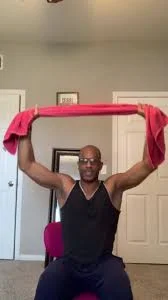
- Maintain a straight stance while kneeling, keeping your shoulders back, chest up, and your eyes forward.
- Hold a towel with your hands shoulder-width apart and your palms facing downward.
- As if you were reaching for the bar at the lat pull-down machine, raise your arms above your head.
- Throughout the exercise, pull as hard as you can to separate your hands while holding onto the towel to fully utilize your lats, rhomboids, and shoulders.
- Draw the towel up to your sternum, fully contracting it while letting your body slightly sway backward so that your chest is looking upward.
- As you raise your arms again for the next rep, keep up the isometric muscle pull.
At-Home Back Exercises Without Equipment
Upper Back Exercises at Home

Reverse Snow Angels

- Place every part of your body flat on the ground, including your thighs, toes, and forehead. Lie on your stomach. Starting with your hands and shoulders straight out, raise them towards your back while keeping them straight and a few inches above the ground.
- When you were a kid, you used to make snow angels, right? This is the opposite of that, as the name implies.
- Raise your hands from the sides of your legs over your head, making a soaring action with your arms that is controlled and steady.
- Always maintain a straight arm position, and concentrate on maintaining the same distance between your hands and shoulders from the floor throughout the exercise.
- Lock your elbows together.
- Without the need for any equipment, reverse snow angels strengthen your lats, delts, and traps.
Superman
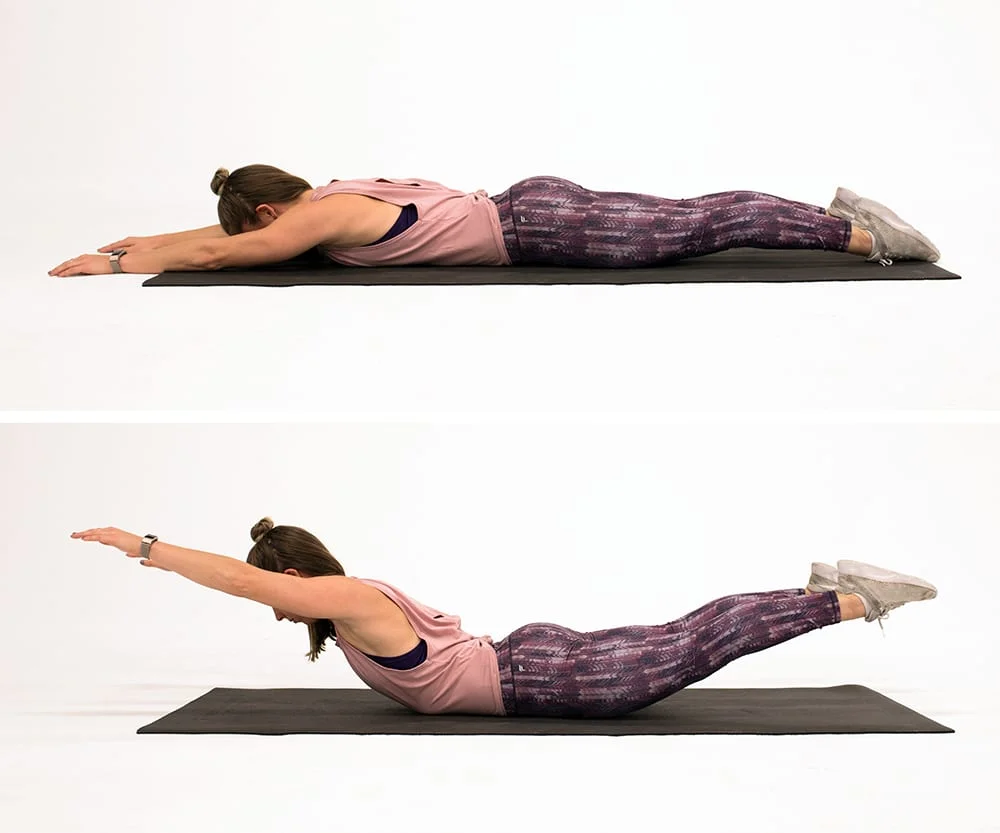
- Get started by lying flat on the floor with your forehead, chest, knees, and feet touching the earth, much like in the reverse snow angels.
- In the opposite direction from where your feet are, extend your arms above your head.
- They can be spaced about shoulder-width apart.
- You will now have an uncanny likeness to Superman in every aspect. Sincere.
- The next step is to compress your core and similarly use your shoulders and glutes.
- Your lower abdomen should stay in contact with the ground, but your hands, feet, and head should all rise several inches off the ground.
- Maintaining the stretching of both limbs and related muscles, akin to a plank, is the challenge (or difficulty) here.
- As you work it out, you can reduce the pain a little bit by raising one opposing arm and leg at a time.
- By maintaining the raised position at the summit of each lift for an extended period, like a plank, you may intensify both.
Lower Back Exercises at Home

Dolphin Kick
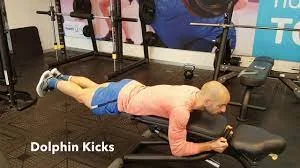
- Something like a bench would be excellent for you to pull onto.
- With your forehead or chin and your chest touching the platform, take a position on the bench or the side of your bed.
- Cling to the platform.
- Your lower tummy should be at an angle at this time, and your legs should be loose.
- Activate your glutes and core. Raise your legs like a seesaw while maintaining your upper body still and in touch with the bench.
- At all times, keep your legs flexed and your knees locked out.
- The result is a lower back exercise that’s similar to what you could typically do with a back hyperextension or Roman Chair raise.
Hip Hinge
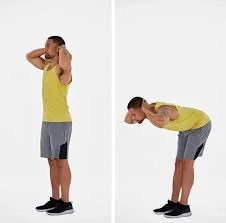
- You must be standing for this one.
- Put your hands on your hips and take an erect stance.
- Make sure not to shift your feet and maintain a greater gap between your feet and hips.
- Simply you should bend forward at the waist to form a right angle, then straighten back up.
- The trick is to move deliberately and slowly, without straining any muscles.
- To experience active muscle working, you need always maintain your muscles activated and accentuate the movement.
- Don’t ever bend your back; instead, maintain a straight back.
- This can also be done in a seated position, which makes it almost a completely separate exercise.
- Bend forward at a 45-degree angle while maintaining your posture and keeping your shoulders back, while seated with your feet exactly beneath your knees.
Conclusion
It is not only possible to strengthen your back muscles without the use of equipment, but it may also be a very effective way to improve posture and increase strength. Including a range of bodyweight workouts that focus on distinct back regions can assist you in developing well-rounded and balanced muscular growth.
To get the most out of these workouts, consistency and good form are essential. As your strength increases, progressively up the volume and intensity of your workouts. While specialized equipment might improve your training, bodyweight exercises offer an easy and accessible technique to build stronger back muscles.
FAQ
Progressive overload can be used to enhance general back growth and development with heavy compound movements such as the Barbell Deadlift, which can be performed with greater weights. The barbell deadlift is a compound exercise that works the entire body, targeting the lats, lower back, and traps with large weights.
You’re strengthening your arm, core, shoulders, back, and chest muscles while you do that, according to Atkins. According to Atkins, you’re also largely working the shoulder joint, which is why maintaining a straight-line body position requires the firing of your stomach in addition to upper body strength.
You may work on your back three non-consecutive days a week, just like you can with any other muscle in your body. When lifting weights that are too heavy for you to execute more than six or eight repetitions in a row, you should take two or more days off before trying the activity again.
Big muscular groups like the chest, back, and legs only require three exercises, four sets of movements, and eight to twelve repetitions per set. Small muscles like the delts, calves, biceps, and triceps require two exercises, four sets of eight to twelve repetitions each.
For priming the back, the straight-arm pulldown and its variations are the most efficient movements. The latissimus dorsi is isolated during this movement. It’s functionally shortened in most circumstances. It is very beneficial to perform a peak concentric contraction in addition to an end-range stretch.
References
- Cnc, A. S. M. C. (2023, April 17). The Ultimate No Equipment Back Workout: 6 Exercises You Can Do Without Weights. Marathon Handbook. https://marathonhandbook.com/no-equipment-back-workout/
- Boardman, J. (2020, May 28). 4 No-Equipment Back Exercises to Try at Home – MYPROTEINTM. MYPROTEINTM. https://www.myprotein.co.in/blog/training/4-no-equipment-back-exercises-to-try-at-home/
- McGlashan, L., & McGlashan, L. (2022, April 17). The No-Equipment Back Workout. Oxygen Mag. https://www.oxygenmag.com/workouts-for-women/the-no-equipment-back-workout/

